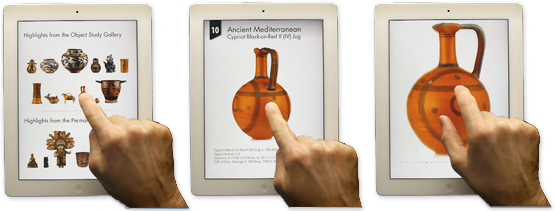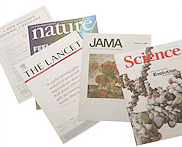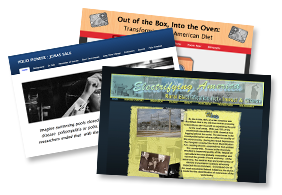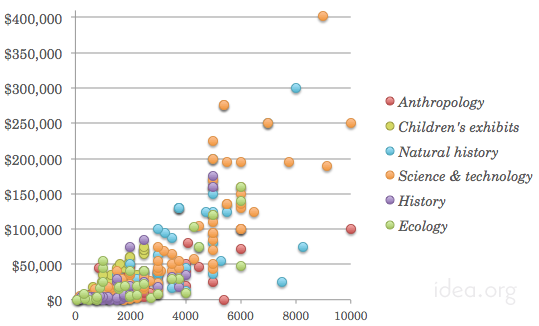Community Embraces New Word Game at Mid-Year Play Day This past Sunday, families at Takoma Park’s Seventh Annual Mid-Year Play Day had the opportunity to experience OtherWordly for the first time. Our educational language game drew curious children and parents to our table throughout the afternoon. Words in Space Several children gathered around our iPads […]
Read moreTag: exhibits
 Games and gaming principles have a useful role in exhibit design for both real world and virtual settings. “As educators, we’re always looking for ways to make museum content ‘stickier’ and more meaningful,” says Michelle Moon in a recent blog post, “All fun and games.” Moon designs and runs public programs for adults at the Peabody Essex Museum.
Games and gaming principles have a useful role in exhibit design for both real world and virtual settings. “As educators, we’re always looking for ways to make museum content ‘stickier’ and more meaningful,” says Michelle Moon in a recent blog post, “All fun and games.” Moon designs and runs public programs for adults at the Peabody Essex Museum.
To get thinking about it, here are some simple game structures that work well for museum learning: (more…)
 A Hopi doll with painted headdress springs to life, spinning under my finger tips on a new iPad app from the University of Virginia Art Museum (UVaM).
A Hopi doll with painted headdress springs to life, spinning under my finger tips on a new iPad app from the University of Virginia Art Museum (UVaM).
The delightful app presents 19 different objects in 3D, to spin and zoom, providing an immediacy that rivals seeing an object in real life. In fact, it’s better in many ways than peering at an object through a protective case because the objects can be spun through a full 360°, view under bright lighting, at high resolution.
Personal exploration
The free app presents the mobile visitor with a grid of objects (below, left):

Virtual exhibits on tablet devices (e.g., the Apple iPad) put exhibits at the fingertips of students and the public. Visitors can browse science, art or culture from classrooms, during their commutes, or from their sofas. — But where does the money come from?
As with physical museums, the problem with charging money for downloads is limiting visitation to enthusiasts. Access must free to get significant use on tablet computers in classrooms, or by people who would not otherwise pay. Aside from grant support or advertisements, are there other revenue models? Could funding come from the community?
We posit that virtual exhibit apps could be free downloads, giving a preview teaser. Then, to see the rest of the exhibit, visitors pay for access, sponsor access for others, or request free access. Here’s how it might look: (more…)
 There is no better way to reach underserved audiences than to drive directly to them. Mobile museums, in converted RVs or semi-trailers, are delivering history, science and art experiences. Here are two great examples.
There is no better way to reach underserved audiences than to drive directly to them. Mobile museums, in converted RVs or semi-trailers, are delivering history, science and art experiences. Here are two great examples.
History
Reaching rural audiences for $10.71 per visitor, the “Van of Enchantment” brings cultural history to schools and public events in New Mexico — at no cost to visitors. New Mexico’s rich history traces back at least 11,000 years, and includes a flourishing Pueblo community in the 13th century, Spanish conquistadors and colonists in the 16th century, and railroads in the late 19th century. (more…)
 The system of getting knowledge about science to the public is broken. One major crack in the system is a disconnect between science museums and new science research.
The system of getting knowledge about science to the public is broken. One major crack in the system is a disconnect between science museums and new science research.
Science museums matter
Aside from the news media, which now has less science coverage as the journalism business contracts, museums play a vital role in how the public learns about science outside of school. New data show that science museums play an important part in this informal learning.
Despite enthusiastic scientists who are using social media, leading citizen science, and supporting other kinds of outreach, the vast majority of scientific information is ensconced in journals and conferences.
To connect this knowledge to the public, it’s common practice for closed-access journals to give journalists free (advance) access to new articles. But the same courtesy is not provided to science museums that would also benefit from new articles, as well as a back library of older articles. And science museums rarely budget for journal subscriptions. (more…)
![]() Over 70% of U.S. museums are in economic distress, according to a new report from the American Association of Museums. Here are some key findings: (more…)
Over 70% of U.S. museums are in economic distress, according to a new report from the American Association of Museums. Here are some key findings: (more…)
 Here’s a snapshot of the current exhibitions or activities being featured at a sampling of U.S. science centers, and their ticket prices for adults. (more…)
Here’s a snapshot of the current exhibitions or activities being featured at a sampling of U.S. science centers, and their ticket prices for adults. (more…)
The costs to rent a traveling exhibit vary widely depending on the size, complexity, subject matter, and underlying objectives of exhibition owners.
To visualize the diversity of costs, we look at the Traveling Exhibitions Database (TED). It includes a database of 768 current traveling exhibitions available in the U.S. The following is the distribution of sizes (square feet) vs. costs ($USD) of traveling exhibits:



 Today,
Today,  This weekend, I was a judge at a local chapter of
This weekend, I was a judge at a local chapter of 